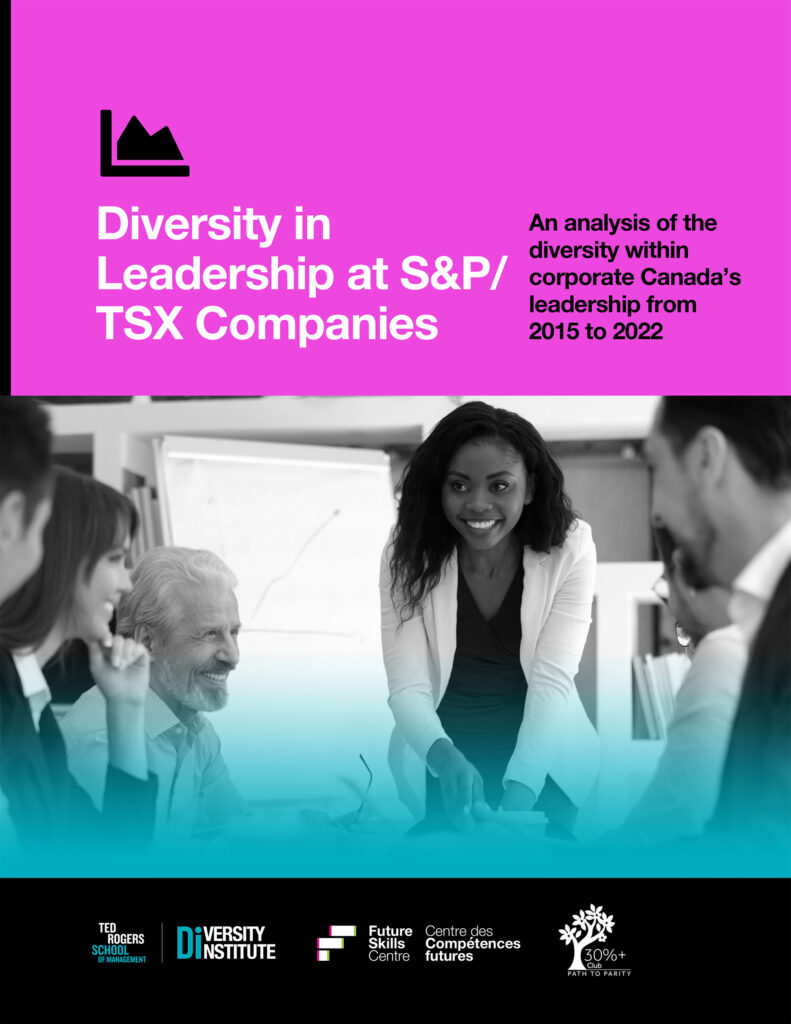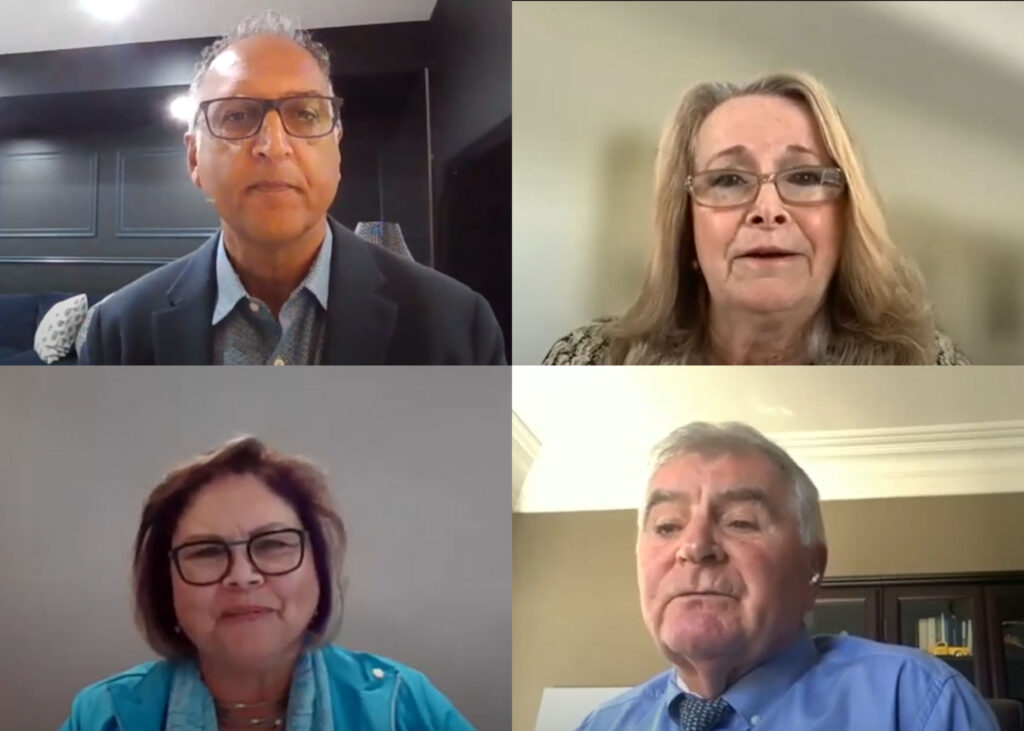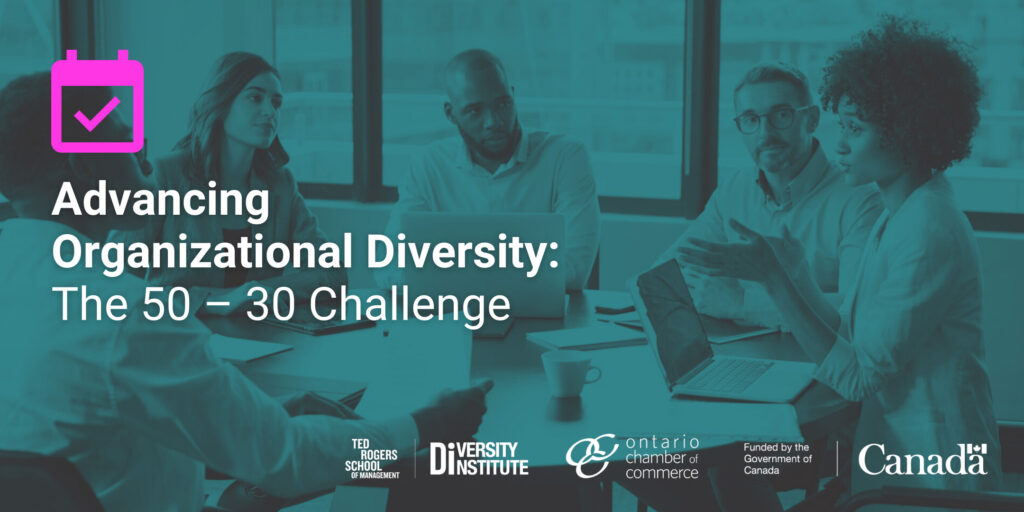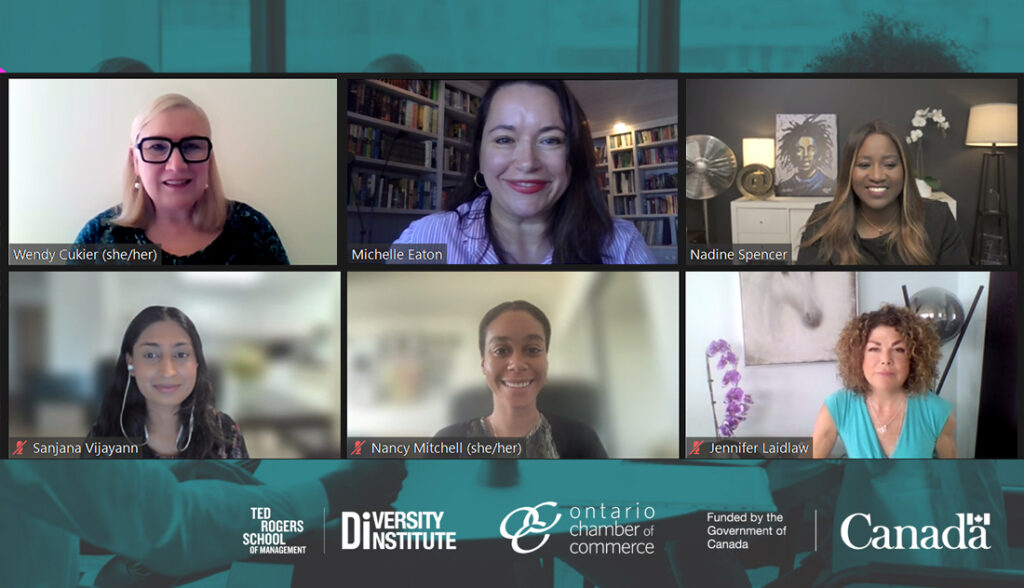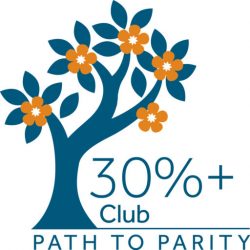Canada | 2023
The business case for diversity and inclusion in corporate leadership has never been stronger. More diversity contributes to improved corporate social responsibility, innovation, employee satisfaction, governance practices and risk management. Despite growing evidence of these benefits, diversity in corporate Canada’s leadership remains inadequate, tied to a lack of effective mechanisms for measurement, tracking and accountability.
Various interventions, including government legislation and advocacy initiatives like the 30%+ Club and BlackNorth Initiative (BNI), aim to address the slow progress in achieving diversity, particularly for women and racialized individuals. The 30%+ Club focuses on achieving at least 30% representation of women on boards and executive teams globally, while BNI aims to combat anti-Black systemic racism and achieve 3.5% representation of Black leaders in executive and board roles.
This report assesses the state of diversity in leadership roles in corporate Canada, focusing on representation of equity-deserving groups (women, Black individuals and racialized individuals) from 2015 to 2022. The study encompasses 783 firms on the Toronto Stock Exchange (TSX), including 235 on the S&P/TSX Composite Index.
The report shows TSX firms have not yet reached 30% representation of women on boards or executive teams (26.2% on boards and 21% on executive teams). S&P/TSX Index firms have done better: Between 2015 and 2022, women’s representation rose from 18.3% to 33.7% on boards, and from 15% to 23.1% on executive teams.
Other key findings
Representation of Black individuals
- – Incremental progress has been noted since BNI’s launch in 2020, with the share of Black individuals increasing from 0.9% to 2.1% on boards and from 1% to 1.5% on executive teams for S&P/TSX Index firms.
- – Progress was slower for TSX firms, reaching 1.7% on boards and 1.5% on executive teams.
Racialized individuals’ representation
- – From 2020 to 2022, racialized individuals’ representation increased from 4.9% to 9.3% on boards and 7.5% to 10.8% on executive teams for S&P/TSX Index firms.
- – Similar rates were observed for TSX firms, standing at 9.3% on boards and 11% on executive teams in 2022.
Intersectional analysis
- – Racialized and Black women still face underrepresentation, with progress noted from 2020 to 2022, but at lower rates compared to other groups.
- – The 30%+ Club members demonstrated higher diversity, achieving at least 30% representation of women on both the S&P/TSX Index (38.8%) and TSX (37.8%).
Geographic variations
- – Representation varied based on where firms are located, indicating a need for tailored interventions. Ontario and Quebec showed higher representations of women, including racialized and Black women.
– The report also delves into strategies for advancing diversity and inclusion.
Societal level
- – Legislation and voluntary codes shape culture and values. The implementation and enforcement of these measures are crucial but insufficient on their own.
- – Addressing basic social infrastructure is essential for lasting change.
Organizational level
- – Comprehensive equity, diversity and inclusion) strategies should be integrated into governance, leadership, human resources, culture, metrics and partnerships.
- – Diversity and inclusion should be embedded in the entire human resources process, from selection to exit processes.
- – Performance measures should track representation, pay inequality, procurement targets and community engagement.
Individual level
- – Companies should invest in building capacity through mentorship, coaching and skills training.
- – Employees need to unlearn biases, stereotypes and perceptions that perpetuate exclusionary practices.
- – Raising awareness of negative behaviours like microaggressions can improve interpersonal relationships and foster inclusive work environments.
In conclusion, this report emphasizes the need for multifaceted interventions at societal, organizational and individual levels to achieve meaningful diversity and inclusion in corporate leadership in Canada. Addressing barriers and leveraging an ecological model of change is crucial for sustained progress.
Published:
December 2023 | Read full report here.
